Welcome! Here are the website rules, as well as some tips for using this forum.
Need to contact us? Visit https://heatinghelp.com/contact-us/.
Click here to Find a Contractor in your area.
If our community has helped you, please consider making a contribution to support this website. Thanks!
Best Of
Re: Sizing a circulator, general questions
A very handy tool, the System Syzer
Here is the EL chart from the manual version of the System Syzer.
A 5 gpm example showing the velocity and friction numbers as the chart above.
Here is the EL chart from the manual version of the System Syzer.
A 5 gpm example showing the velocity and friction numbers as the chart above.
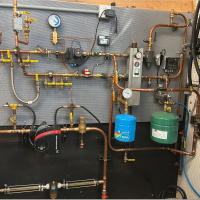 hot_rod
hot_rod
1
Re: Why must The 12 psi fill pressure be increased for 3 floor house?
@Joseph_4, I'm going to post my same PM answer here for the group... and I can correct my typos
I like to think of it this way: A man shows his son how to install a boiler, he shows him that the expansion tank always goes on a certain tapping on the boilers they install. The circulator always goes on the return and the fill valve always goes on the coldest pipes in the system so as not to shock a hot boiler with cold water. He did that for 30 years and now his son has taken over the business. The father or the son never installed a boiler in a 3 or 4 story home
One day the son gets a big job and installs the boiler in the same way in a 3 story home. As soon as the job is done and the boiler operates, the relief valve starts to leak. The son installs a new relief valve only to find the same problem. He calls the father and his father has no explanation.
Well here is the answer. They have been doing it wrong for over 30 years but it never was a problem because the incorrect design was always on a 2 story home. When they needed to fill the 3 story building, the problem showed up as a leaking relief valve because they needed more than 12 psi to start with..
See if you can see the problem in this illustration I used in my classes
When all is off and cold and All the pressure gauges are at 12 PSI. Before the flame heats the water, but as soon as the circulator pump starts, the pump will drop the pressure on the inlet side because it is pumping towards the point of no pressure change... the expansion tank. But the water pressure in the return pipe will be lower than the 12 PSI of the auto fill valve. So the fill valve will add water pressure to 12 PSI. That pump will add the pump head (let's say 6 PSI) to the 12 PSI from the inlet. That is now a total of 18 PSI. With that extra water, the expansion tank gets more water in it to compress the air to 18 PSI. There is less room for expansion now. After the system cools off everything is now 18 PSI with cold water. On the next heating cycle, the expansion tank has less room so the pressure will go up to 24 PSI. Since the relief valve will not go off until the pressure gets to 30 PSI, there is no problem. The system operates at a higher pressure for years and years.
Now apply the same problem to a home with 3 stories and you need to start at 18 PSI cold. Then add the 6 PSI to that. Now on the second cold start the system will be at 23 PSI. On the second cycle... you will be getting closer to 29 PSI when the water heats up, since the expansion tank capacity is reduced. That is only one PSI away from the relief valve blowing off.
And that is the way we have done it since forever ago! Wrong but without a problem ... until there is a problem.
I hope you all followed the chain of events here... Now that make Pumping away the greatest thing since Sliced Bread!
I like to think of it this way: A man shows his son how to install a boiler, he shows him that the expansion tank always goes on a certain tapping on the boilers they install. The circulator always goes on the return and the fill valve always goes on the coldest pipes in the system so as not to shock a hot boiler with cold water. He did that for 30 years and now his son has taken over the business. The father or the son never installed a boiler in a 3 or 4 story home
One day the son gets a big job and installs the boiler in the same way in a 3 story home. As soon as the job is done and the boiler operates, the relief valve starts to leak. The son installs a new relief valve only to find the same problem. He calls the father and his father has no explanation.
Well here is the answer. They have been doing it wrong for over 30 years but it never was a problem because the incorrect design was always on a 2 story home. When they needed to fill the 3 story building, the problem showed up as a leaking relief valve because they needed more than 12 psi to start with..
See if you can see the problem in this illustration I used in my classes

When all is off and cold and All the pressure gauges are at 12 PSI. Before the flame heats the water, but as soon as the circulator pump starts, the pump will drop the pressure on the inlet side because it is pumping towards the point of no pressure change... the expansion tank. But the water pressure in the return pipe will be lower than the 12 PSI of the auto fill valve. So the fill valve will add water pressure to 12 PSI. That pump will add the pump head (let's say 6 PSI) to the 12 PSI from the inlet. That is now a total of 18 PSI. With that extra water, the expansion tank gets more water in it to compress the air to 18 PSI. There is less room for expansion now. After the system cools off everything is now 18 PSI with cold water. On the next heating cycle, the expansion tank has less room so the pressure will go up to 24 PSI. Since the relief valve will not go off until the pressure gets to 30 PSI, there is no problem. The system operates at a higher pressure for years and years.
Now apply the same problem to a home with 3 stories and you need to start at 18 PSI cold. Then add the 6 PSI to that. Now on the second cold start the system will be at 23 PSI. On the second cycle... you will be getting closer to 29 PSI when the water heats up, since the expansion tank capacity is reduced. That is only one PSI away from the relief valve blowing off.
And that is the way we have done it since forever ago! Wrong but without a problem ... until there is a problem.
I hope you all followed the chain of events here... Now that make Pumping away the greatest thing since Sliced Bread!
Here’s to hoping I don’t mess this up
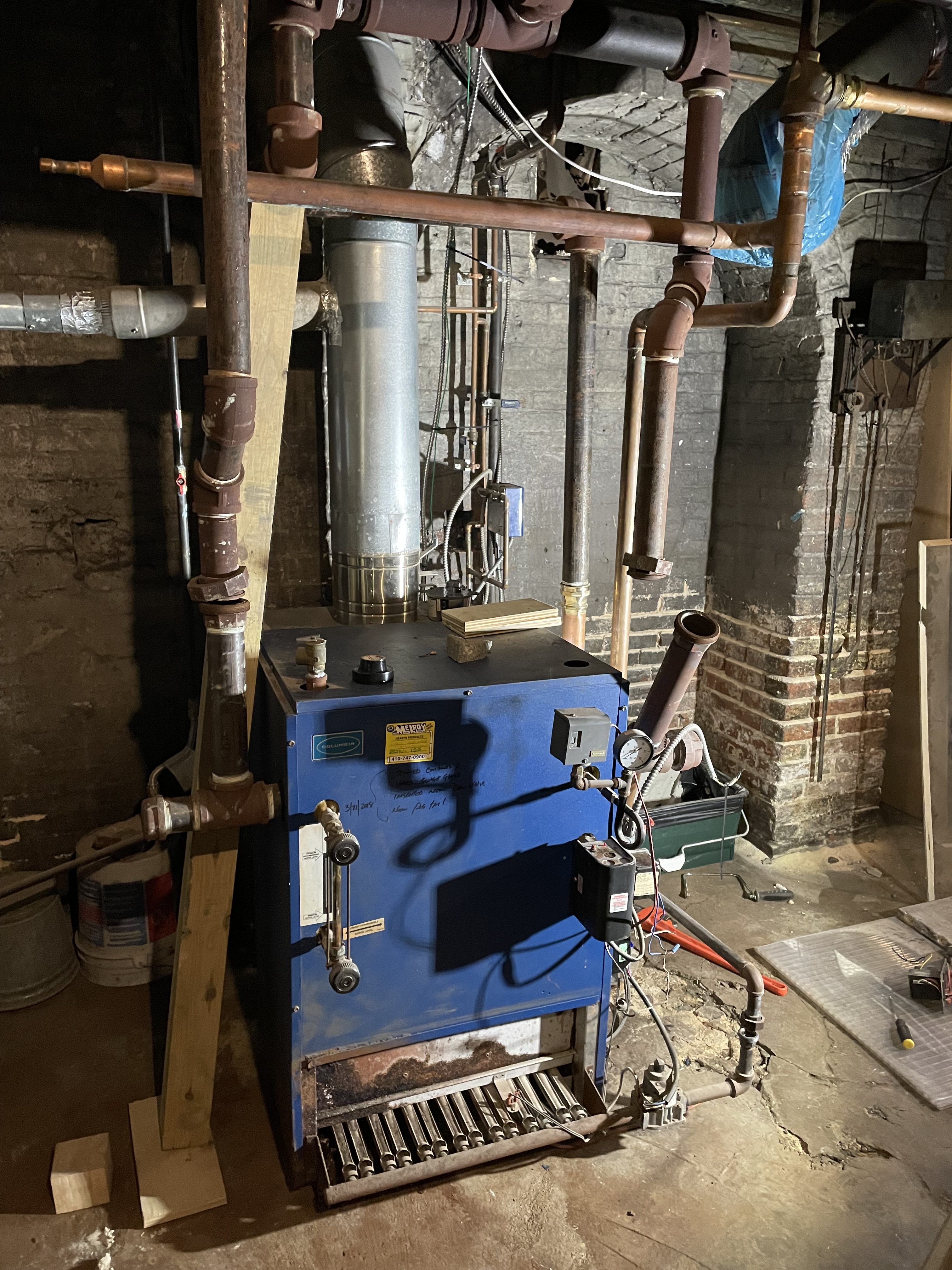
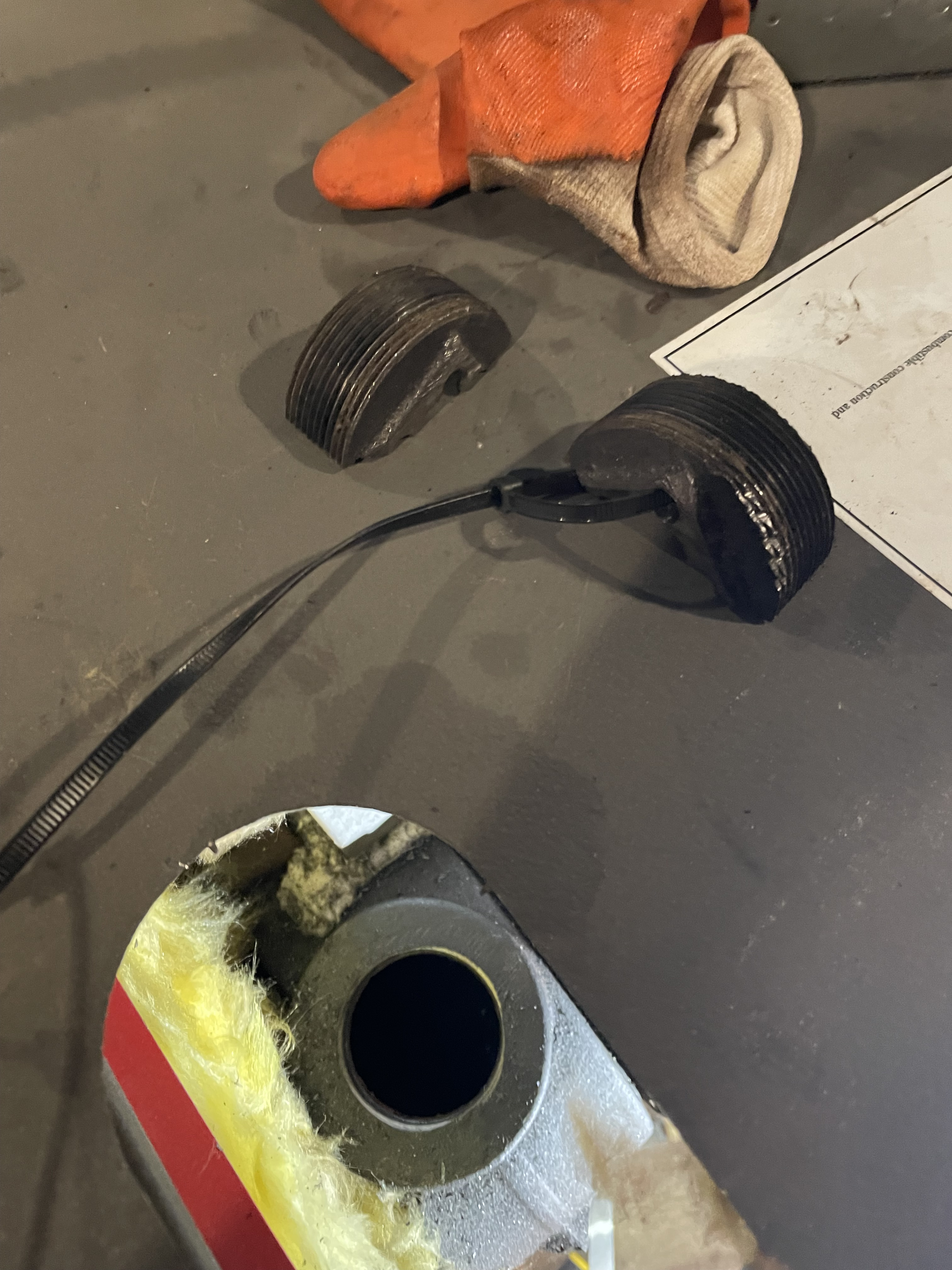
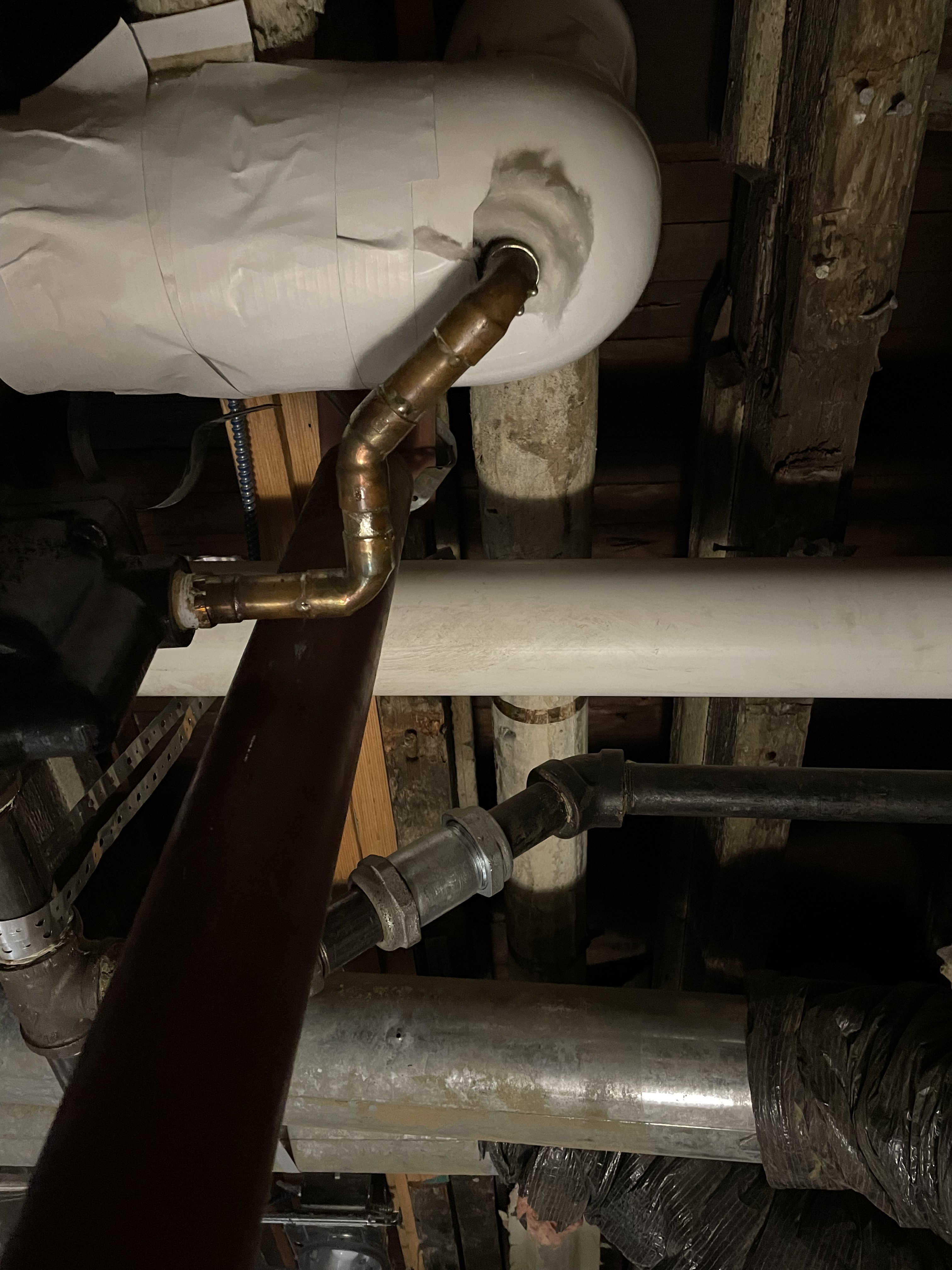
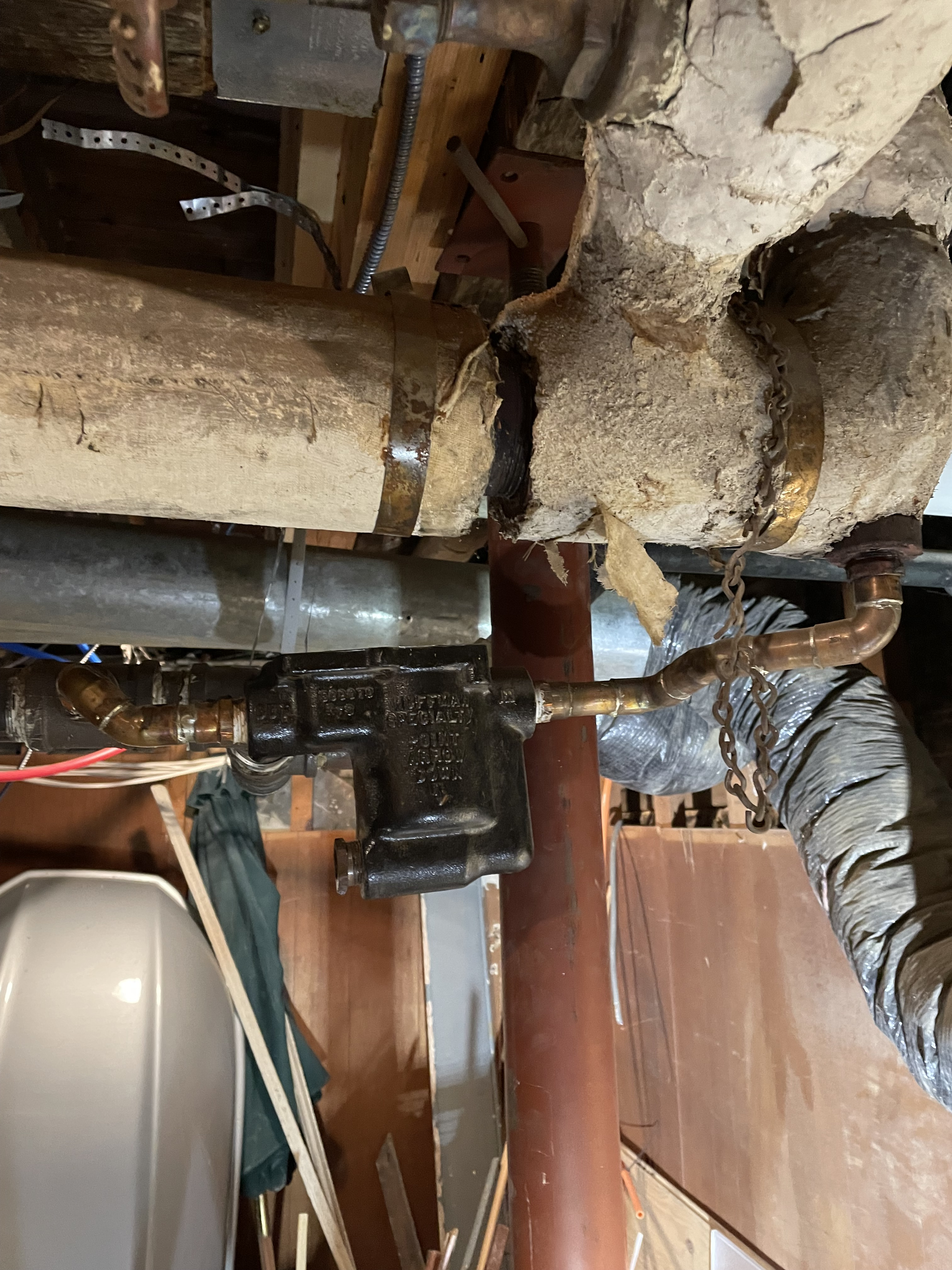
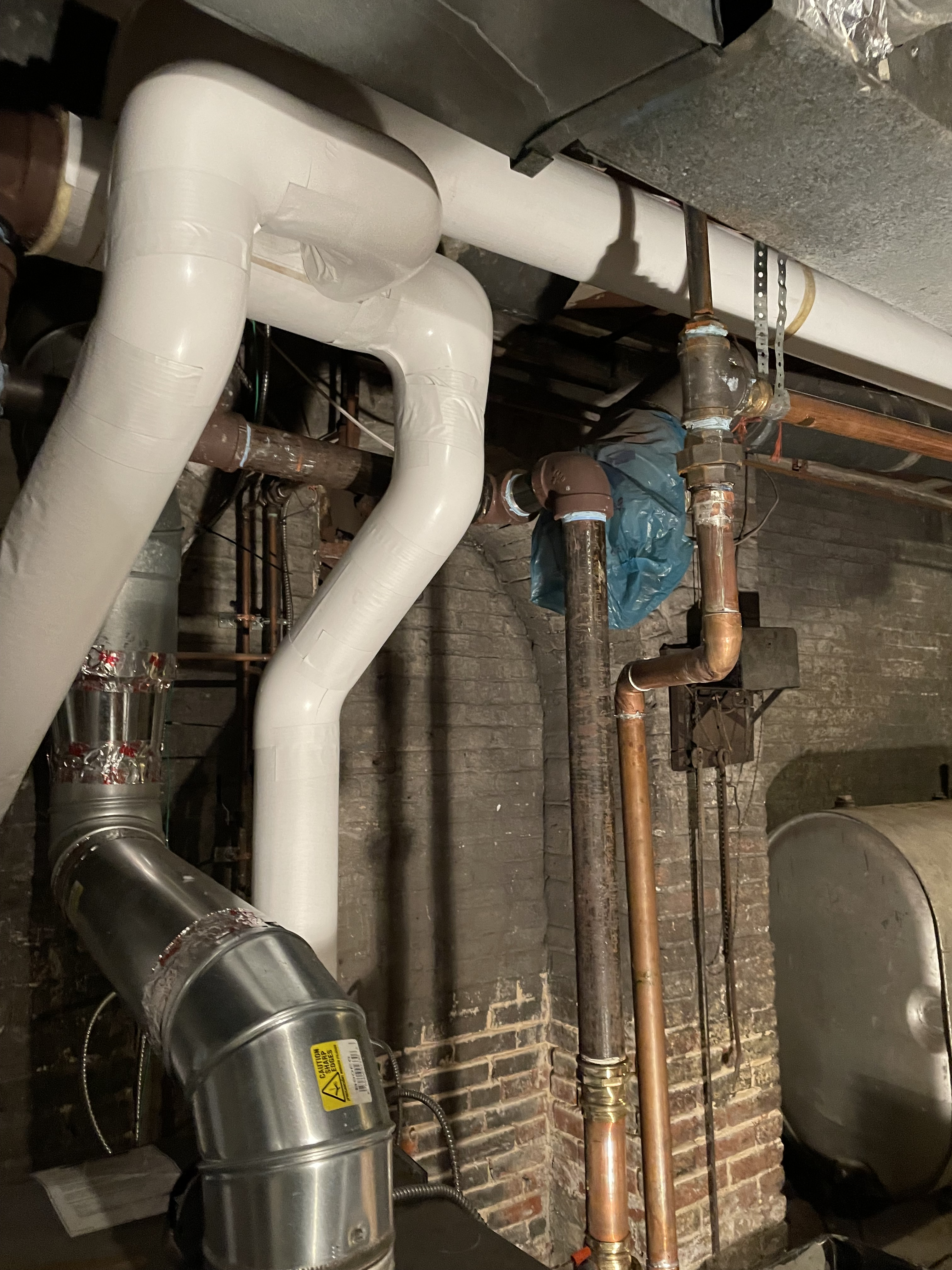
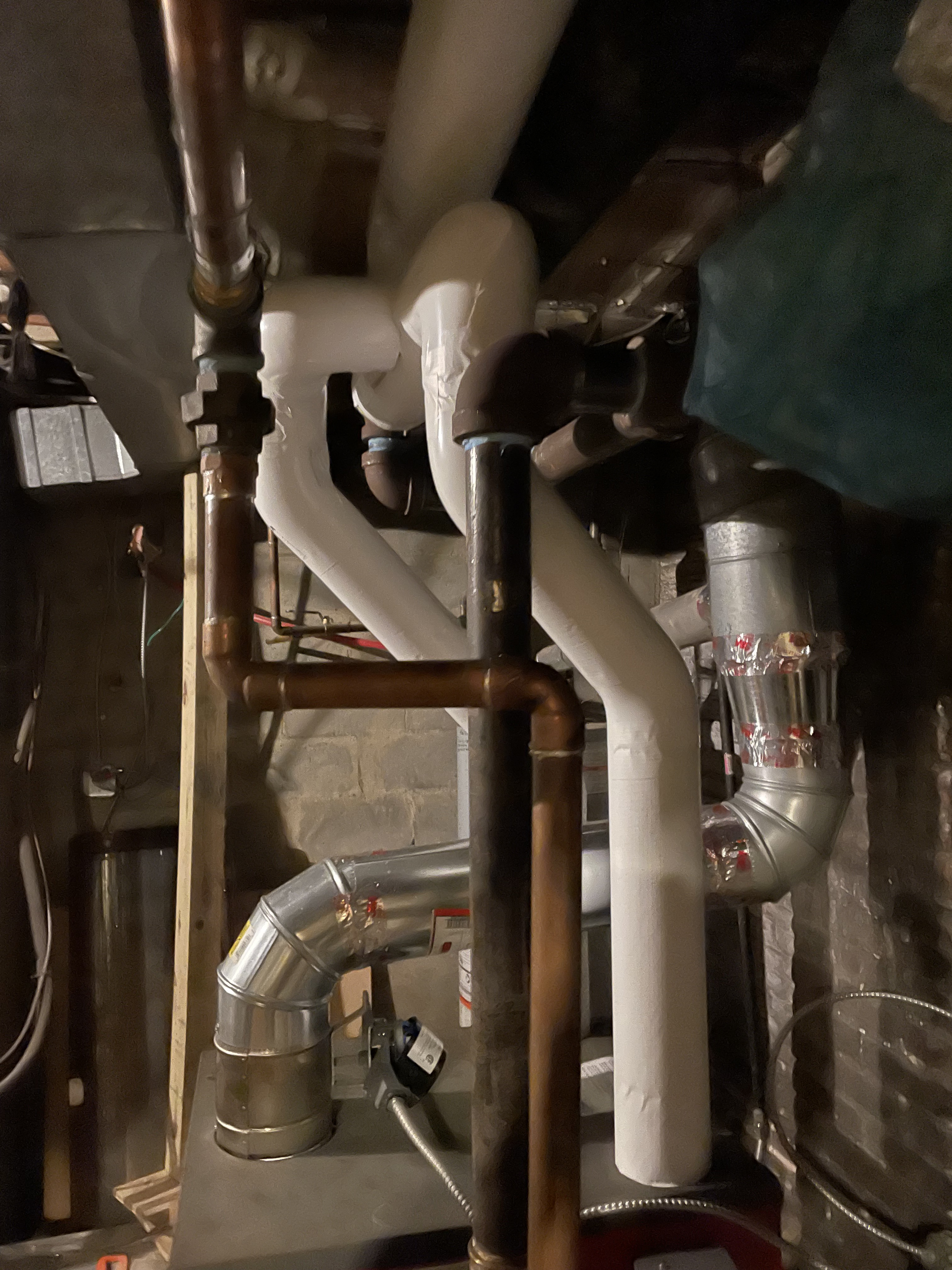
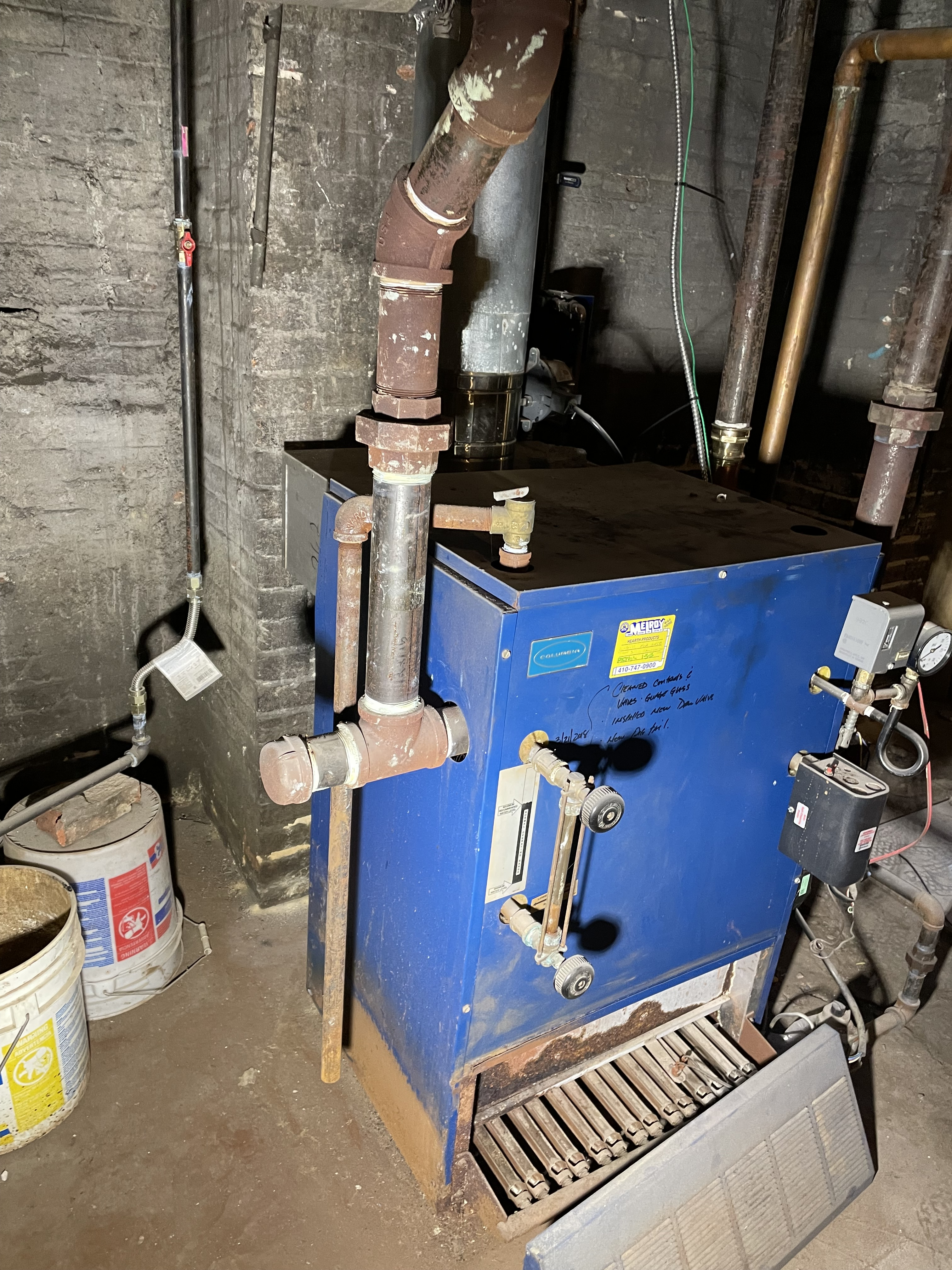
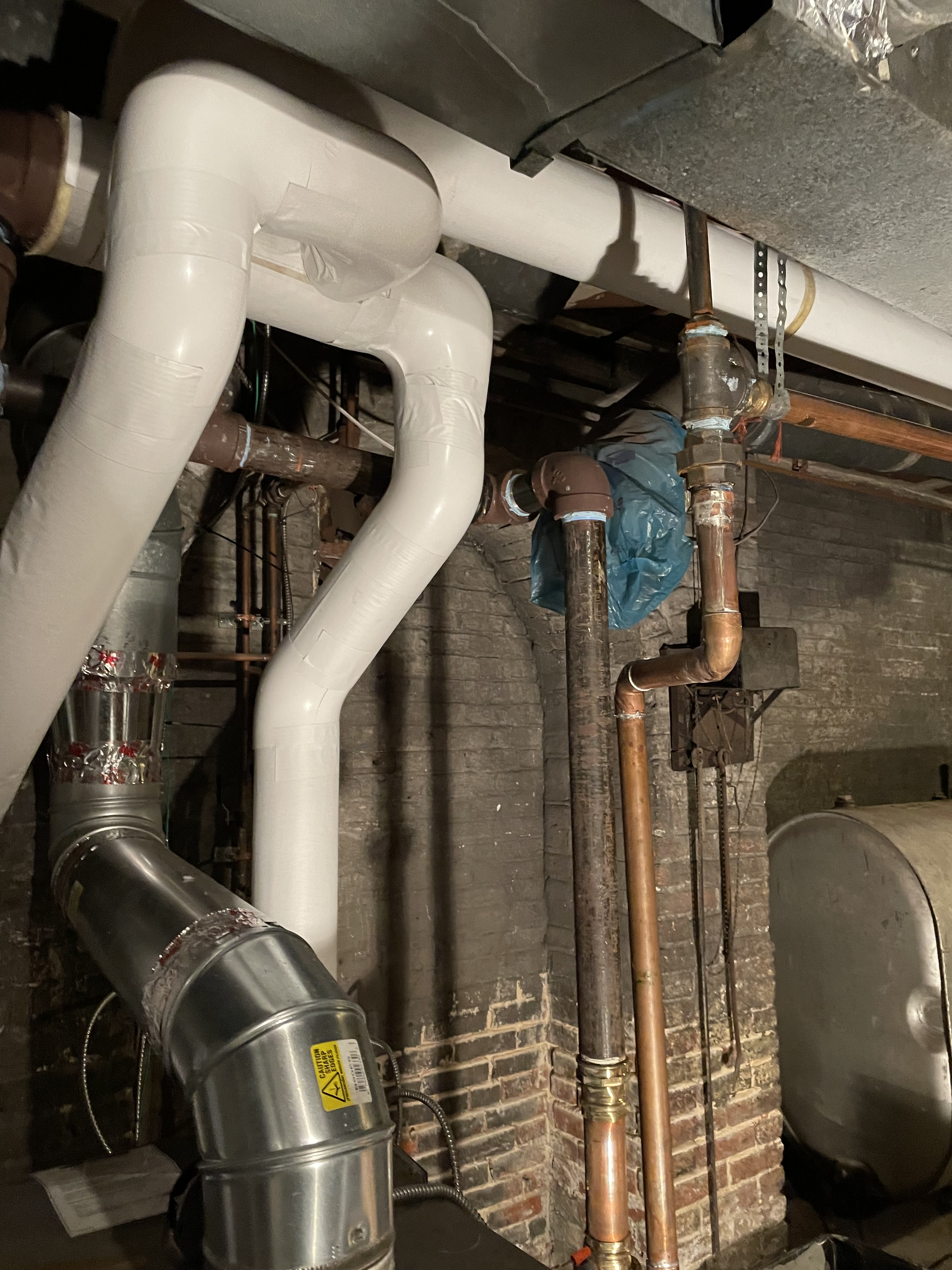
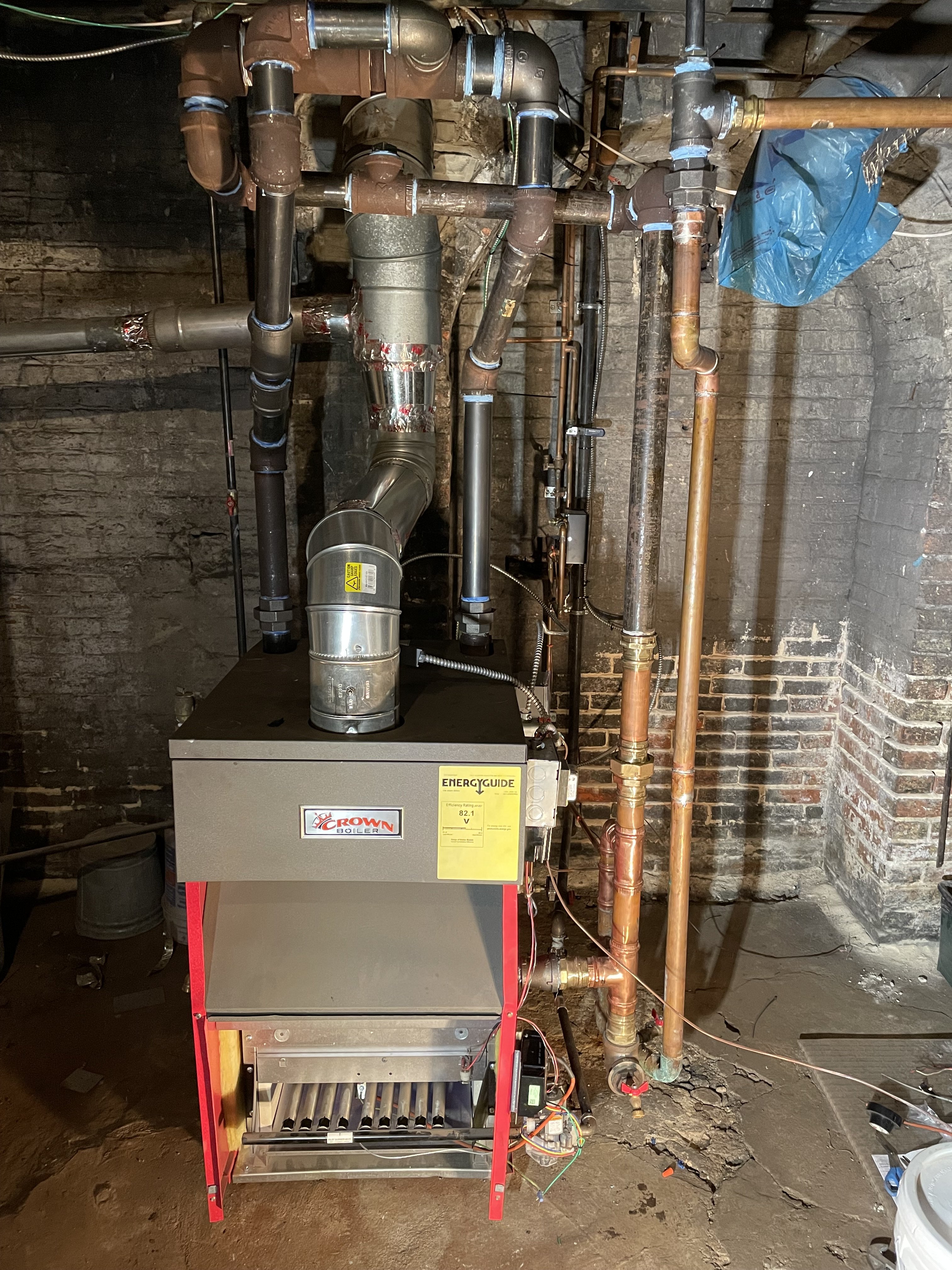 I just wrote a long post, said “oh crap, I gotta go check the water level in the site glass,” and put my phone down… prompting the site to ask me to log in again having not saved all I had written (mostly history of how we ended up in the house we are in, inoperable steam system, hiring the wrong contractor, finding Gordon @ all steamed up in the dead of winter two years ago when there was no time on the schedule for a full boiler swap, and then me finding a lightly used Crown boiler I gambled $1500 on, and doing a solo refit of a 172k btu boiler… I’ll detail that later).
I just wrote a long post, said “oh crap, I gotta go check the water level in the site glass,” and put my phone down… prompting the site to ask me to log in again having not saved all I had written (mostly history of how we ended up in the house we are in, inoperable steam system, hiring the wrong contractor, finding Gordon @ all steamed up in the dead of winter two years ago when there was no time on the schedule for a full boiler swap, and then me finding a lightly used Crown boiler I gambled $1500 on, and doing a solo refit of a 172k btu boiler… I’ll detail that later).Last Thursday, following a same day call back from Gordon with him identifying an ignition wiring issue over the phone after I told him I replaced the ignition module with a universal Honeywell unit that apparently calls for different wiring than the diagram on the boiler… we have heat. THANK YOU GORDON.
Here’s where we are, and what I could use some theory help on:
- 6,000 sqft 5 story row house in Baltimore, built either 1845 or 1825 (city has both recorded), we bought in 2020.
- two pipe UVac (initial) steam system installed by UVac of Ellicott City in 1908. Excluding near boiler piping, 100% of the steam mains are original and 100% of the returns that run vertical are original, and the last ~50’ of the return line back to the boiler has been replaced with copper, seemingly over a number of years. The layout of the runs are still the same as the original plans.
-Crown Aruba 172k boiler (Mf’d 2018 I believe) that I got second hand and inspected with a plumbing camera.
I did the near boiler pipe work in the basic layout stipulated by crown (initial install on the boiler I bought was 1 supply, I dove back into summers plumbing with a dad and two uncles and had to break out the drill, cut, chisel method of removing the second cap to get the second main)… though short of having the ability to cut and rethread 115 year old 3” cast iron, I chose to leave the 90 that header feeds into well enough along meaning the new boilers layout had be about 10-12” offset from the header such that my risers have a pair of 45s (ignore the pair of 2” tees that I had and worked out so I could temp finish the repipe of the one riser and header return so I didn’t have to keep running all over while waiting for a 2” ratchet threader to arrive).
- three Hoffman crossover traps from the main to the return, one of which was replaced with an inverted bucket at some point. A Gorton number 2 at the end of the return before it falls back into the Hartford loop. Combination of Spirax, Hoffman, and a few other types of rad traps on each radiator, all of which either work (or possibly have failed open)
- heat is pretty well even, many original rads and original metered valves with wood handles… a handful I replaced that were previously mangled, had cross thread unions, etc, but I intend to do my best to find parts, turn new wood handles to replace the cracked ones, etc. probably 40 radiators in the house. We only live on the bottom 3 of 5 floors.
- if the system runs (2-3 cycles an hour) all day, we get mild hammer. If it gets warm enough outside that it sits for a few hours, we get real bad steam hammer.
- I believe my problem is that the previous owner had ball valves (just like… a normal ball valve) on the third floor to enable shutoff of floors 4-5 (which is ideal for us as well, as there is currently no plumbing run up to keep from freezing, and we are a good 5+ years around from diving back in to restoring those floors and using them… but) the setup doesn’t seem ideal for a two pipe system, because I’d assume much of the steam heading up a ~40’ vertical main from the basement to the third floor only feeds three small rads in one room on the third floor hits the valve and has no way out, eventually condensing and running back down three stories. Would a vent or a crossover trap be logical? I could in theory climb through the materials and storage… and literally everything the previous owner owned that’s stored up on the 4th and 5th floor to check the operation of the 15 or radiators up there such that I could fully open the system, but I’m not real keen on that in terms of regular visibility since everything up there is the original 1908 pipe and valves and traps (the prior owner seems to have fiddled with replacing some trap internals and he was pretty meticulous) as we’d also be heating unused parts of the house for no reason.
-I’d guess that for some period of time, this didn’t cause much of an issue until a first floor forced air conditioning system was installed what looks like 5-10 years before we bought the house which prompted an idiot to remove the iron hangers on a 2.5” main 16’ long such that I’m under sloped for condensate in the main that’s got 20’ of run past the last crossover trap. I can hear and feel the steam and a slug of condensate battling their way across that run.
- on top of that issue, at the end of that 20’ long 2.5” main, there’s a 3/4” drop fitting (looks to be part of the original elbow, but at some point fitted with copper and a Hoffman inverted bucket trap that was JAMMED with sludge; properly cleaned, drain, and checked every day for the past week) that as a result of a 24’ long 6x16” beam breaking free due to ages of water damage breaking the sewer main and shifting resting on the steam main (by old notes from the prior open, this happened in ~2010) which I believe the bucket trap was compensating for as currently the the return runs parallel to the main right there, such that the original crossover trap would have had to run uphill an inch to drain off, but ultimately condensate more than fills the bucket and settles above it.
my thought, or my question is, with so much condensate happening here due to a combination of bad slope, and inability for a solid column of steam to go anywhere other than back down the main since a lot of it is hitting a ball valve rather than going into a return, I see a few possible short term options to eliminate my hammer, but I’m real new to steam (I’m the son of a plumber, with two uncles and a cousin that are plumbers, stemming from a line of steam fitters before them… steams a different animal, but I’m not afraid to put in the work).
- would a vent or a crossover trap where the ball valve segmenting off the top two floors to give the steam somewhere to go be wise, and help the hammer? (And also, I’d assume replacing the standard ball valves with a proper gate valve would be wise?)
- the area the bucket trap is in the basement, at the same level as the return line so there’s no gravity win to be had… can I run that off to a secondary return so I can achieve proper slope below the existing return and tie it in below where the existing return falls into the Hartford loop?
- right in that same area, the main breaks off in two directions, with a 2” run headed towards the back building 15’ that’s capped off with no outlet (the back building main and return were buried in the dirt below the subfloor and crumbled in my hands when rebuilding the entire floor structure on the first floor. With 2 of 3 levels in the rear building being 3 season rooms… I abandoned the dead piping, and the prior contractor capped the line off with a 2” SS mega press… I know I ultimately need to remove the going nowhere 15’ long 2” main, but haven’t gotten there yet and plan to eventually re-run it through a seal chamber outside to get some heat back into the back building at some point… I just know it’s contributing to settling condensate fighting against the steam, so I’ll pull and cap it soon
pictures attached, tear me apart, help me out… but count me all in on being committed to steam. Three floors of having restored the 200+ year old floors, plaster, and more should help confirm I’m playing for keeps and trying to pay tribute to the old dead men that paved the way.
Jeff
2
Re: honeywell 8000 Redlink or Wifi
BTW, found this online electronics diagramming tool:
https://www.circuitlab.com/
In case anyone in the future is interested:

1
Re: Should there be a liner in an old American Standard Arcoliner Boiler (maybe 1940s - 1950s)?
I had one of those boilers. It had a "bathtub" combustion chamber and the original baffle. With a Beckett flame retention burner it did 80% or better on combustion tests. Due to the high mass the standby loss was significant, but it kept the basement around 60°F through New England winters. They are easy to service, built like tanks, and last a long time.Yea, it is amazing they last so long and I love how easy it is to clean and service. Seems like it could last many more years if I take care of it properly. Thanks for the info! I may consider hanging onto this one a bit longer.
Respect your elders. 😎
2
Re: Big thank you to Peerless Boilers.
Things may be starting to turn around. They have been complaining about the lack new students coming into the trades for the last 15 years or so. At code update classes they said the average age of plumbers, pipefitters and electricians was 56 years old. And that was years ago. Probably a lot higher now.
But at my latest update this past weekend the instructor who also teaches in a trade school said that things are picking up and the school had 350-400 new students.
The pendulum swings.
But at my latest update this past weekend the instructor who also teaches in a trade school said that things are picking up and the school had 350-400 new students.
The pendulum swings.
Re: Big thank you to Peerless Boilers.
The General Society of Mechanics and Tradesmen is such a great group; love that old building.They are restoring the skylight.
On aside note, what are they doing to the library? It that a temporary deck for falling object protection from work being performed on roof?
Re: Taco's VT2218 Delta T circulator
SteveSan and JoeM, I used the Taco Customer Response System at tacocomfort.com and replacement has been shipped after providing details. Taco does respond on this issue. Thanks to Mario DelSignore for helping me with this.
 ncalhvac
ncalhvac
2
Re: Info on 1947 Jantrol gas conversion on 100 year old coal ARCO boiler.
Thanks for your feed back. Just replacing it for a new boiler. Got the contractor from this site. Not a thermocouple but a thermoswitch that would open unpredictably. It just made sure the pilot was lit. Boiler only had pressure relief vent, pressuretrol and that thermoswitch as safety. No rollout fuse, spill switch or low water cutoff. They lived dangerously back then.
1
Minnesota Right to Repair Law
https://pirg.org/articles/minnesota-passes-broadest-right-to-repair-measure-to-date/
Not the whole article, but here is the WMno57 condensed version:
Not the whole article, but here is the WMno57 condensed version:
When originally filed, the Minnesota legislation covered all electronic products except for cars and medical devices. As the bill moved forward, farm and construction equipment was also exempted, as were video game consoles and home energy storage systems.
The bill still covers everything else. For the first time, the Right to Repair extends to appliances, enterprise computing and commercial equipment (such as HVAC systems). In addition, the bill covers many of the products already included in New York’s first-in-the-nation consumer electronics Right to Repair bill.
The bill still covers everything else. For the first time, the Right to Repair extends to appliances, enterprise computing and commercial equipment (such as HVAC systems). In addition, the bill covers many of the products already included in New York’s first-in-the-nation consumer electronics Right to Repair bill.
 WMno57
WMno57
1

